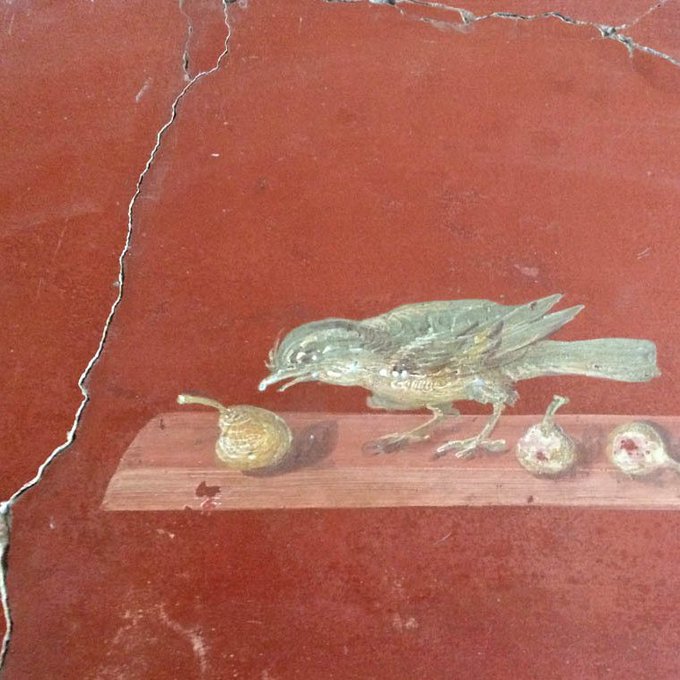Herculaneum,のTwitterイラスト検索結果。 7 件
#FrescoFriday | A lively Roman fresco depicting Hercules discovering his son Telephus.
Found in Herculaneum, Telephus is suckled by a deer as Arkadia, Pan and a winged Virgo watch on.
🏛️@MANNapoli
#Classics #Roman #Art #Archaeology #Myth
#FrescoFriday - #Herculaneum, House of the Deer (IV, 21)
This fresco consists of three #paintings. One portrays a peach branch; on another the upper step there is a large plate of matte glass, lowboard, with figs and dates. As well as other fruits.
#Roman #Art #History
For #worldsparrowday2021 there is an issue with ancient Greek because nobody knows whether "strouthos" mean a sparrow or small ostrich-type bird. So here are two exquisite bits of fresco from Oplontis, the sister town of Pompeii and Herculaneum, instead.
Demeter Peplophoros ΔΗΜΗΤΡΑ ΠΕΠΛΟΦΟΡΟΣ (peplos-long garment, phoros-to wear) Discovered 1997 in ancient city of Herculaneum, near Campania, Italy. Dated 1st CE BC. Greek goddess of agriculture. Aniquarium of Boscoreale, Naples.
Isis Ritual Ceremony - Roman #fresco from #Herculaneum, Italy.
The cupids decorating a tripod.
Fresco of the 4th style. (Herculaneum, Insula V, 17—18)
The traditional date that #Vesuvius started to erupt, destroying the cities of #Pompeii & #Herculaneum, is 24th-25th Aug 79 AD. This is due to a letter written by Pliny The Younger. It is now believed the disaster occurred in the autumn, as many braziers have been found in homes.




















